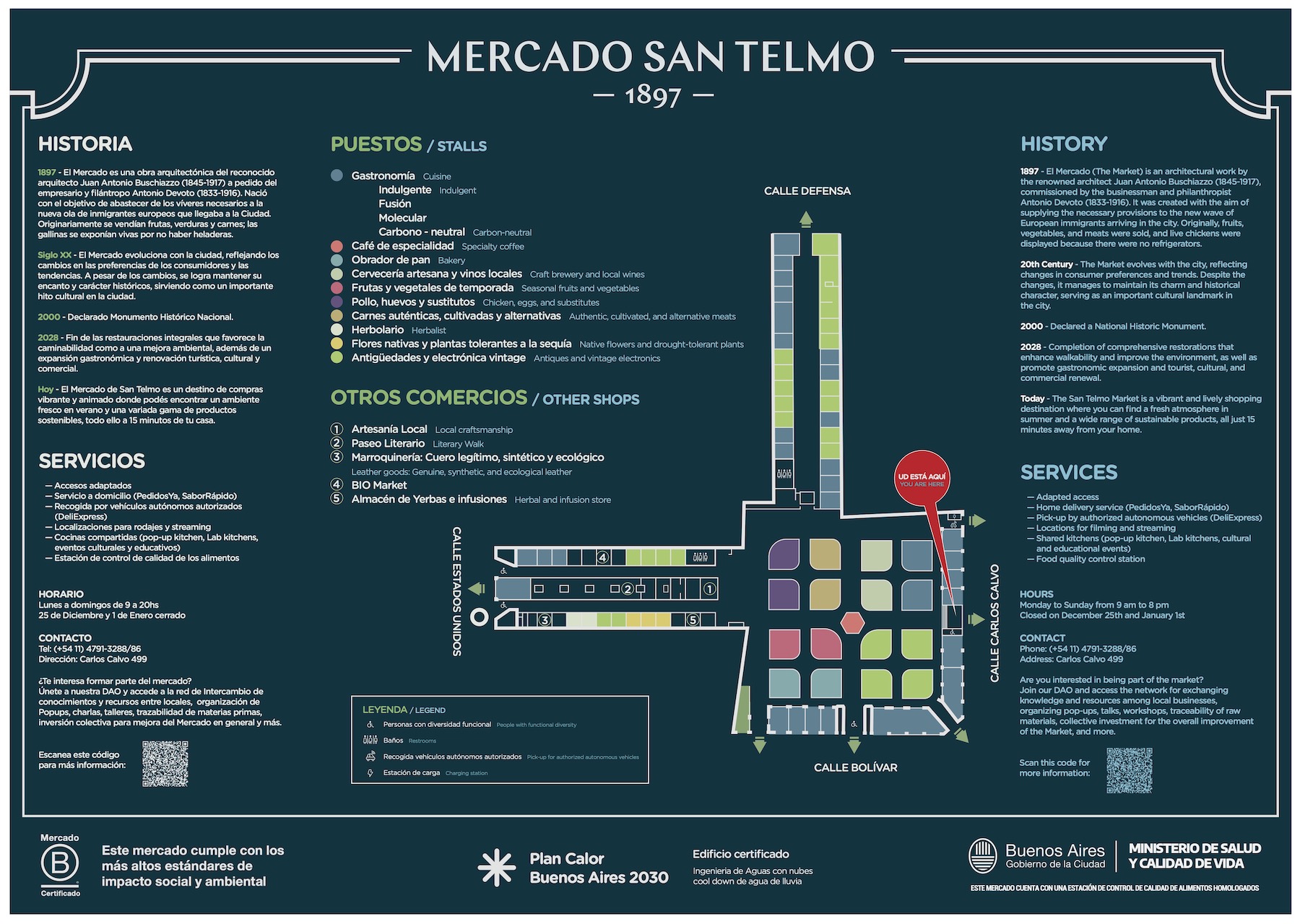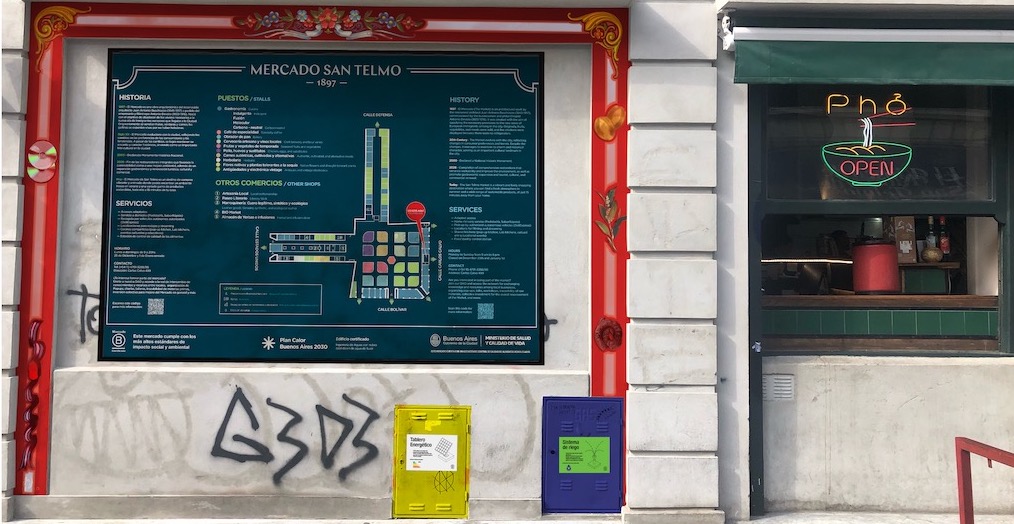In a future where average global temperatures have risen by 2°C, cities like Buenos Aires have transformed to adapt to ecological challenges and their social and economic consequences. Buenos Aires has become a model for the “15-minute city” concept, focusing on walkability and accessibility.
One of the city’s iconic landmarks, Mercado San Telmo, built in 1897, underwent a complete restoration in 2028. Today, it thrives as a vibrant shopping destination offering sustainable products and a fresh atmosphere in summer. The building is self-sufficient in energy and water, utilizing solar panels and rainwater harvesting. A Food Quality Control Station ensures the safety of food products in light of recent scandals in the consumption of cultivated meat.
Mercado San Telmo serves as a hub for culinary innovation, where chefs and local producers collaborate in shared kitchens, promoting talents and shops in the neighborhood. A diverse gastronomic offerings flourished influenced by environmental, technological, and cultural factors. From indulgent cuisine to fusion creations and molecular gastronomy, the market caters to a wide range of tastes. Seasonal fruits and vegetables are celebrated, promoting freshness and supporting local farmers.
Sustainability is a priority for locals, with the butcher shops and restaurants exploring alternative protein sources like lab-grown meat, insect proteins, algae proteins, and fungal proteins. The use of drought-tolerant plants became the norm combating heat waves and high temperatures in the streets, offices and apartments.
Visitors flock to sections dedicated to antiques and vintage electronics, showcasing Buenos Aires’ rich cultural heritage. In this future Buenos Aires, the Mercado San Telmo is a symbol of resilience, sustainability, and a harmonious blend of tradition and innovation. It represents a city’s adaptation to a changing climate while preserving its rich heritage and embracing a diverse, sustainable future.


This map is the result of a collaboration between Nicolás Bronzina, Israel Viadest and Fabien Girardin at the Near Future Laboratory. It is based on research about the future of food in a 15-minute city led by Nicolás Bronzina. It shows the different stalls, shops and services of Mercado San Telmo influenced by long periods of extreme heat and droughts.
Source: Mercado San Telmo: the potential future of the City of Buenos Aires and its gastronomy through the evolution of one of its iconic markets